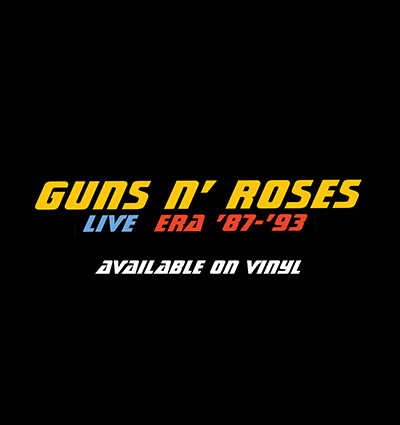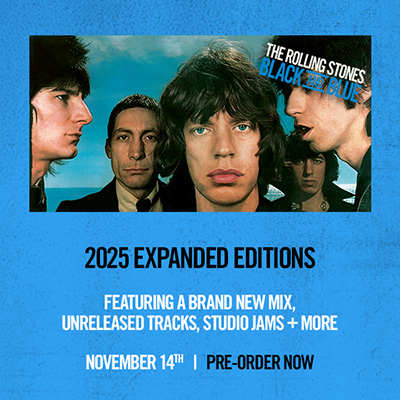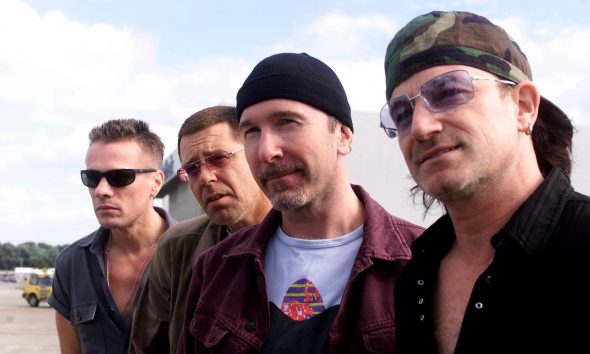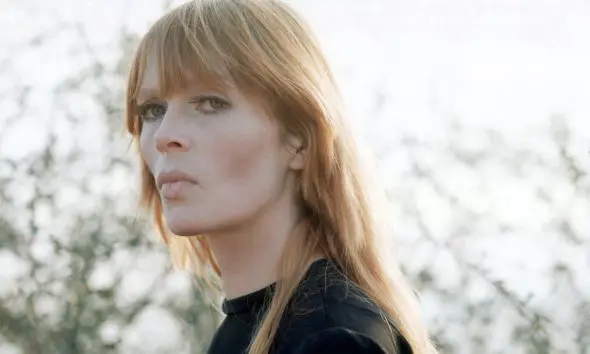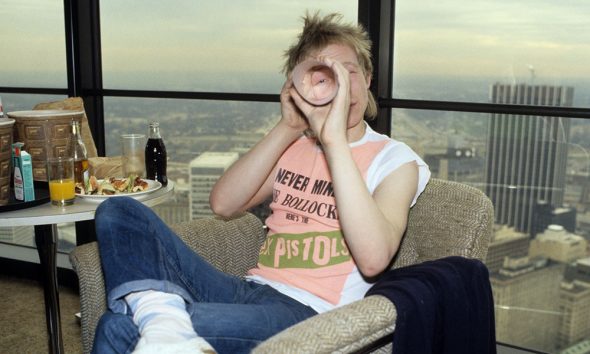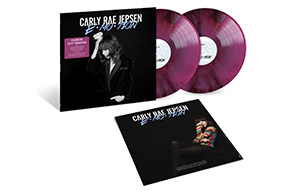All You Need Is The Summer Of Love: How 1967 Sparked A Revolution
The summer of 1967 has taken on an almost mythical magic, a psychedelic summer of love.
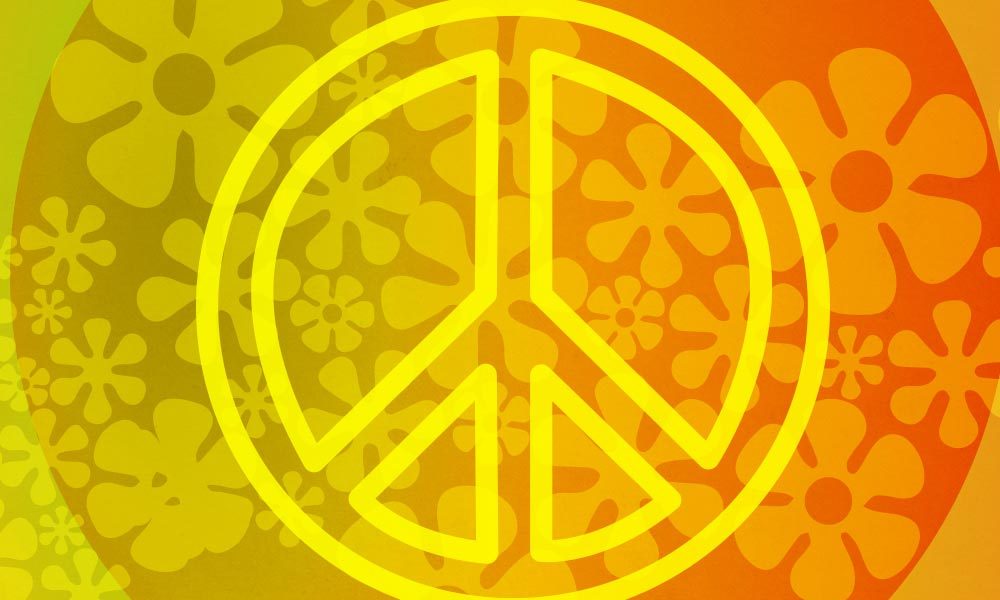
“The year 1967 seems rather golden,” Paul McCartney later reflected. “It always seemed to be sunny and we wore far-out clothes and far-out sunglasses. Maybe calling it the Summer Of Love was a bit too easy, but it was a golden summer.”
In the intervening decades, the summer of 1967 has taken on an almost mythical magic, a psychedelic “summer of love” with beautiful people turning on, tuning in and dropping out on every corner, from Hyde Park in London to Haight-Ashbury in San Francisco. Legend paints a DayGlo picture of the coming-of-age of the youth of the world; an awakening of the tribes, fuelled by love and LSD, and soundtracked by arguably the greatest album ever made – Sgt. Pepper’s Lonely Hearts Club Band, a creative klaxon call to announce the changing of the guard.
And while this is all true, it only tells a small part of the story. 1967 was, of course, a year like any other. It rained, people were born and died, newspapers were filled, sold and discarded, and the world continued to turn. And yet something was definitely in the air. The times really were a-changin.
Picking sides
The previous year had been a good one for Britain. Fans of pop music were treated to albums such as The Beatles’ Revolver, The Beach Boys’ Pet Sounds and Bob Dylan’s epic Blonde On Blonde. England’s football fans were on top of the world after Geoff Hurst’s Wembley hat-trick saw Queen Elizabeth II present their heroes with the World Cup trophy. London was now the centre of the fashion world, thanks to Twiggy, miniskirts and Mary Quant. It felt like something was happening.
As the calendar flipped over on Sunday, January 1, 1967, any kind of cultural revolution felt like a world away. Tom Jones was in the middle of a seven-week stay at the top of the UK charts with his country ballad “Green, Green Grass Of Home” – a walk down memory lane, about returning to the old homestead and a warm welcome from the folks waiting there. Color television was yet to burst into UK homes, and Val Doonican And The Barron Knights were still Top 20 artists.
But an underlying feeling remained that the counterculture and mainstream were coming together, that sides were being picked. In a United States where the actor Ronald Reagan had just been sworn in as Governor of California, The Rolling Stones were censored when they appeared on The Ed Sullivan Show, the network objecting to the lyrics of their latest single, “Let’s Spend The Night Together,” and forcing Mick Jagger to sing “Let’s spend some time together” instead. Sullivan’s show had fought to maintain a clean-cut family-show image since the days of Elvis Presley, some 10 years earlier, but this felt different.
The Stones were also targeted at home when, on February 5, the News Of The World published a story claiming that a number of leading musicians had taken LSD, a drug recently declared illegal. A week later, the police followed this story with a raid on Keith Richards’ house, where Richards, Jagger and their friend, the art dealer Robert Fraser, were charged with possession of illegal drugs. (A rumour persists to this day that the officers waited until George Harrison had left the party before the bust, such was the then-untouchable nature of Britain’s favourite foursome.)
A week later, that same invincible group released what many consider the greatest pop single of all time, the double A-side “Strawberry Fields Forever”/“Penny Lane.” This pair of songs about childhood haunts was 2,000 light years from the nostalgia of Jones’ green, green grass of home, looking to future possibilities, creating new out of the old.
The NME’s Derek Johnson admitted, “Quite honestly, I don’t really know what to make of it.” Incredibly, the single was the first Beatles outing in years not to top the UK charts, and was kept at No.2 by Englebert Humperdinck’s “Please Release Me.” Yet it provided a clear message that whatever the Beatles were up to, locked away in EMI’s Abbey Road studios, the music they were now creating was a long way from that of even 18 months earlier, when the soundtrack to their Help! movie found the Beatles still in moptop mode, covering rock’n’roll standards the likes of “Dizzy, Miss Lizzy.” They’d come a long way in a short time, but where they were headed, even they couldn’t have guessed.
The underground goes overground
March saw further conflict between the old and new guard. The Beatles, along with pop star friends the Stones, Marianne Faithfull and Donovan, had kept a keen eye on the developing artistic scene in London. Op (as in: optical) and pop art were championed by underground newspapers such as the imported Oz, whose writers included Germaine Greer, and the homegrown International Times (IT), founded by Barry Miles and John “Hoppy” Hopkins in late 1966. Fundraisers for the IT had become the happenings of choice in London, with “all night raves” held at Camden’s Roundhouse and featuring acts such as Pink Floyd and Soft Machine. Paul McCartney attended one in disguise, while filmmaker Michelangelo Antonioni took inspiration from them for his Swinging London movie Blow-Up.
Alongside such heavyweights as William Burroughs, Allen Ginsberg and Norman Mailer, Paul McCartney graced the cover of the January 16 edition of the IT. McCartney had lent not just his support but even his car to the cause, with Miles borrowing the singer’s Aston Martin to collect the wood he needed to furbish his Indica Bookshop & Gallery in Covent Garden. McCartney could regularly be found at the Indica, helping put up shelves and paint the walls – whatever it took. (It was at a November 1966 Indica show of Yoko Ono’s work that John Lennon met the Japanese artist who would so influence the rest of his life and work.)
After a plain-clothed police raid on the Indica offices of the em IT, a “free-speech benefit” was planned at London’s vast Alexandra Palace, by way of uniting the underground scene in a huge show of support for the paper, while raising funds for potential legal costs resulting from the raid. The 14 Hour Technicolor Dream was held on April 28, 1967 and saw 10,000 “beautiful people” celebrate a night of poetry, dance, performance art, giant inflatables and “far-out” visuals orchestrated from a vast tower of strobes, movie projectors and oil lamps.
Live music was provided by Soft Machine, The Move, Pete Townshend, Graham Bond and The Crazy World Of Arthur Brown. John Lennon could be seen wandering among the revelers. At daybreak, Pink Floyd took to the stage (pipers at the gates of dawn, perhaps?), and, as one of the crew recalled, “In the early hours, people sat on the grassy bank outside the Palace, watching the dawn break. An open-backed truck drove up the hill to the entrance to the Palace; someone was stood on the back dispatching loaves of bread and bananas to all those present. Peace reigned and all was well with the world.”
An endless stream of creativity
With every passing week, a new record emerged that moved the goalposts in an endless stream of creative outpouring. January brought Buffalo Springfield’s “For What It’s Worth,” while “I Feel Free,” which had been released in December ’66 released by supergroup Cream, climbed the charts. In March, as Frank Sinatra bagged the Record Of The Year Grammy for “Strangers In The Night,” Jimi Hendrix unleashed his “Purple Haze” on the world (“Difficult to assess its commerciality” said Melody Maker). The American guitar magician grabbed front-page headlines when he set fire to his guitar at London’s Finsbury Park Astoria, landing him in hospital with minor burns to his hands.
Pink Floyd’s debut single, “Arnold Layne” courted controversy for its lyrical content, while The Velvet Underground & Nico album caused a stir thanks to its pop art cover, featuring a peel-able banana. And so it continued month after month: The Kinks’ “Waterloo Sunset,” The Who’s “Pictures Of Lily,” Procol Harum’s “A Whiter Shade Of Pale,” The Monkees’ “I’m A Believer,” Cat Stevens’ Matthew & Son. The sound of black America was peaking too, with Eddie Floyd’s “Knock On Wood,” “Bernadette” by Four Tops, and “Jimmy Mack” by Martha And The Vandellas.
But it wasn’t just the supposed “cool kids” troubling the pop charts. Buying records was a pleasure for the whole family. A cursory glance at the UK chart for the first week of April 1967 sees Humberdinck still there at No.1, followed by Harry Secombe, and Vince Hill’s “Edelweiss” in third spot, with the first-ever Eurovision winner, Sandie Shaw’s “Puppet On A String,” heading to the top.
“You could just pick up the vibes”
The world of pop on both sides of the Atlantic had been moving fast for a few years. Whenever Dylan would put a new record out, The Beatles would devour it to see how he’d changed the game. In California, The Beach Boys would obsess over every new Beatles record, looking for inspiration. And so it went, from The Byrds and The Doors (whose debut was released in January ’67, and would be swiftly followed by a sophomore effort in September) to The Who and The Rolling Stones. “We had a sort of international secret code going back and forth through records,” said The Byrds’ Roger McGuinn about this “competitor-colleague” relationship.
In San Francisco, the police were becoming overwhelmed by the number of runaways to be found on the streets of the city’s Haight-Ashbury district. The mantra, as espoused by former Harvard psychologist-turned-LSD-acolyte Dr Timothy Lear, was clear: turn on, tune in, drop out. Young people from across the States were headed for the Frisco bay, humming Scott McKenzie’s No.1 smash “San Francisco (Be Sure To Wear Flowers In Your Hair).” The Human Be-In, staged in the city’s Golden Gate Park in January, was a call to arms for the flower children, an event – or “happening” – proclaimed as a gathering of the tribes.
Sgt. Pepper’s Lonely Hearts Club Band
Leary addressed the assembled tens of thousands there, as did poet Allen Ginsberg and other leading counterculture figures. Music was provided by Jefferson Airplane, Grateful Dead and Big Brother And The Holding Company. Similar events took place in England, New York and California throughout the year. “The summer of 1967 was the Summer Of Love for us,” George Harrison said. “We could feel what was going on with our friends, and people who had similar goals in America. You could just pick up the vibes, man.”
In April, Paul McCartney decided to fly to the States to surprise his girlfriend, the actress Jane Asher, who was working there. With him he took an acetate of Sgt. Pepper, which he enjoyed playing to the musicians he hooked up with. He jammed with Jefferson Airplane in San Francisco; while in Los Angeles, he stayed with The Mamas And The Papas, and even dropped in on a Beach Boys recording session, lending his carrot-munching talents to the backgrounds on “Vega-Tables.”
As Wilson later admitted, listening to the new songs McCartney had brought with him had a profound affect on the West Coast musicians. His own wife broke down in tears when McCartney played them “She’s Leaving Home.” The waves of expectation were building. Just as the press were wondering why The Beatles has been silent for so long, so the fab four knew that they had something special in the can. McCartney later recalled: “Music papers started to slag us off… because [Sgt. Pepper] took five months to record, and I remember the great glee seeing in one of the papers how The Beatles have dried up… and I was sitting rubbing my hands, saying, “You just wait.’”
Since 1963, Beatles fans were used to being spoiled. As well as a new single every three months, they would have two new albums a year, not to mention touring, TV appearances and the occasional EP. By the end of May 1967, they were positively starved – they hadn’t had an album of new material since the previous August, and, aside from the “Strawberry Fields Forever”/“Penny Lane” single, no new sounds had been heard since. So by Sgt. Pepper’s release date, fans were virtually salivating at the thought of a new Beatles album (so much so that some shops are said to have started selling copies a few days earlier). And, unsurprisingly, The Beatles had created something well worth the wait.
The Beatles had begun the project on November 24, 1966. With no other commitments (they had quit touring that summer), and budget restrictions not a consideration, the four could finally devote all their energy to fulfilling their creative desires. By the year’s end, all that was in the can was “Strawberry Fields Forever,” a few early elements for “Penny Lane,” and an old song of Paul’s called “When I’m Sixty-Four.” With EMI desperate for something to issue, the first two songs were taken for a single, putting an end to the initial idea of creating an album steeped in childhood memories. But what would come next would more than compensate for their loss.
Next up was a song that would rank with the best of the band’s recordings. “A Day In The Life” took some 34 hours over three weeks to assemble. The band threw a party in Abbey Road’s Studio One for the final overdubs session, complete with orchestra in fancy dress. The conclusion of the song was a 24-bar gap, which McCartney decided to fill with a phenomenal crescendo of sound – an aural happening, or freak-out – before a crashing chord wrapped things up. That famous chord was in fact played on three pianos at once by John Lennon, Paul McCartney, Ringo Starr, producer George Martin and roadie Mal Evans, before being multi-tracked four times over.
“A Day In the Life” was just one of a number of sonic challenges the boys set their producer and his gifted engineer Geoff Emerick. But the collaborative nature of the sessions brought out the best in everyone concerned. Whether building a wash of fairground atmospheres for “Being For The Benefit Of Mr Kite!,” scoring and supervising western and Indian musicians for George Harrison’s cerebral “Within You Without You,” or adding the sound effects that lift songs such as “Good Morning Good Morning” and the title track, the production team pulled out all the stops.
Indeed, one of the most striking elements of the album is how clear and vital it is sonically. Every vocal part, every guitar note, every drum beat and every orchestral sound is a joy throughout. The bass, painstakingly recorded by McCartney and Emerick after the other elements had been completed, dances across the tracks. Psychedelia floods the album, from the Lewis Caroll-inspired lyrics to “Lucy In The Sky With Diamonds” to the dream-like “She’s Leaving Home.”
As soon as Sgt. Pepper was completed, the boys took an acetate to the London flat of Cass Elliott of The Mamas And The Papas. As dawn broke, they flung open the windows, put the speakers on the ledge and blasted the album out into the Chelsea skies. As press officer and friend Derek Taylor recalled, “All the windows around us opened and people leaned out, wondering. It was obvious who it was on the record. Nobody complained. A lovely spring morning. People were smiling and giving us the thumbs up.”
Thumbs went up across the board. The Times’ Kenneth Tynan called it “A decisive moment in the history of Western civilization,” and that summer, Sgt. Pepper was everywhere. Just three days after the album’s release, Jimi Hendrix opened with a cover of the title track at London’s Saville Theatre – with Paul McCartney and George Harrison themselves in attendance. “That was the ultimate compliment,” McCartney later said. “I put that down as one of the great honors of my career.”
The album’s revolutionary artwork brought pop art into pop, and, from there on, the album cover became an art form in itself. Fans pored over both the artwork and the music, looking for clues to hidden meanings. Sgt Pepper became the first rock album to win the coveted Album Of The Year Grammy Award, and has since gone on to be named the greatest album ever made by a number of polls.
The Summer Of Love officially begins
And with that, the Summer Of Love had officially begun. Later in the month, The Beatles were called upon to represent Britain on Our World, the world’s first live international satellite TV show, which also featured Pablo Picasso and Maria Callas. Their message to the world was simple: all you need is love.
In California, The Beatles sent a message of goodwill to all those at the Monterey International Pop Festival, a three-day event that featured The Who, The Jimi Hendrix Experience, Simon And Garfunkel, and host of others. In the UK, color TV was launched on the BBC, and political reforms such as the decriminalisation of homosexuality suggested a more liberal future. When Mick Jagger and Keith Richards were given jail terms for their earlier drugs bust, the country was outraged, prompting William Rees-Mogg in The Times to question, “Who breaks a butterfly on a wheel?”, asking if they would have received such terms had they not been members of The Rolling Stones.
1967 will be remembered as a pivotal year for many reasons – the death of Che Guevara made him an icon of rebellion; opposition to the Vietnam War grew in the UK and US, as well as elsewhere; rallies called for the legalisation of marijuana. But the most iconic event of the year remains that revolutionary new Beatles record. In Sgt Pepper’s Lonely Hearts Club Band they embodied everything that the Summer Of Love is remembered for, while showing the world that it was possible for a band to take full control of their own destiny, creativity and desires. They also, in many ways, set another marker: the pop LPs as a form of art; it’s no coincidence that 1967 was the first year in which albums outsold singles.
In Sgt Pepper’s wake, the floodgates opened, with an extraordinary run of albums of unrivaled creativity unleashed onto a delighted public. Pink Floyd’s debut, Piper At The Gates Of Dawn, was released in August. Something Else By The Kinks emerged the following month, alongside the latest offering from the Beach Boys. Brian Wilson had long been working on his follow-up to Pet Sounds, and the July ’67 single “Heroes And Villains” promised a revolutionary record. But while his vision for Smile wouldn’t be completed for another four decades, their September 1967 album, Smiley Smile, showed just how far The Beach Boys had come since surfing, hot rods, and honeys on the beach.
And so on it went: Sly & The Family Stone emerged with A Whole New Thing, Pisces, Aquarius, Capricorn & Jones Ltd showed that The Monkees were taking more control of their output; and The Rolling Stones’ Their Satanic Majesties Request reflected their admiration for everything psychedelic.
Today, the world has changed unrecognizably. And yet Sgt. Pepper remains vital, somehow managing to sum up its time perfectly, while still sounding vivid, fresh and glorious. Journalist Paul Gambaccini recalled: “The Beatles were unique in being both reflective of, and leading, our tastes. They were the cultural Mission Control.”
As George Martin put it: “Sgt. Pepper’s Lonely Hearts Club Band was a musical fragmentation grenade, exploding with a force that is still being felt. It grabbed the world of pop music by the scruff of the neck, shook it hard, and left it to wander of, dizzy but wagging its tail.”

